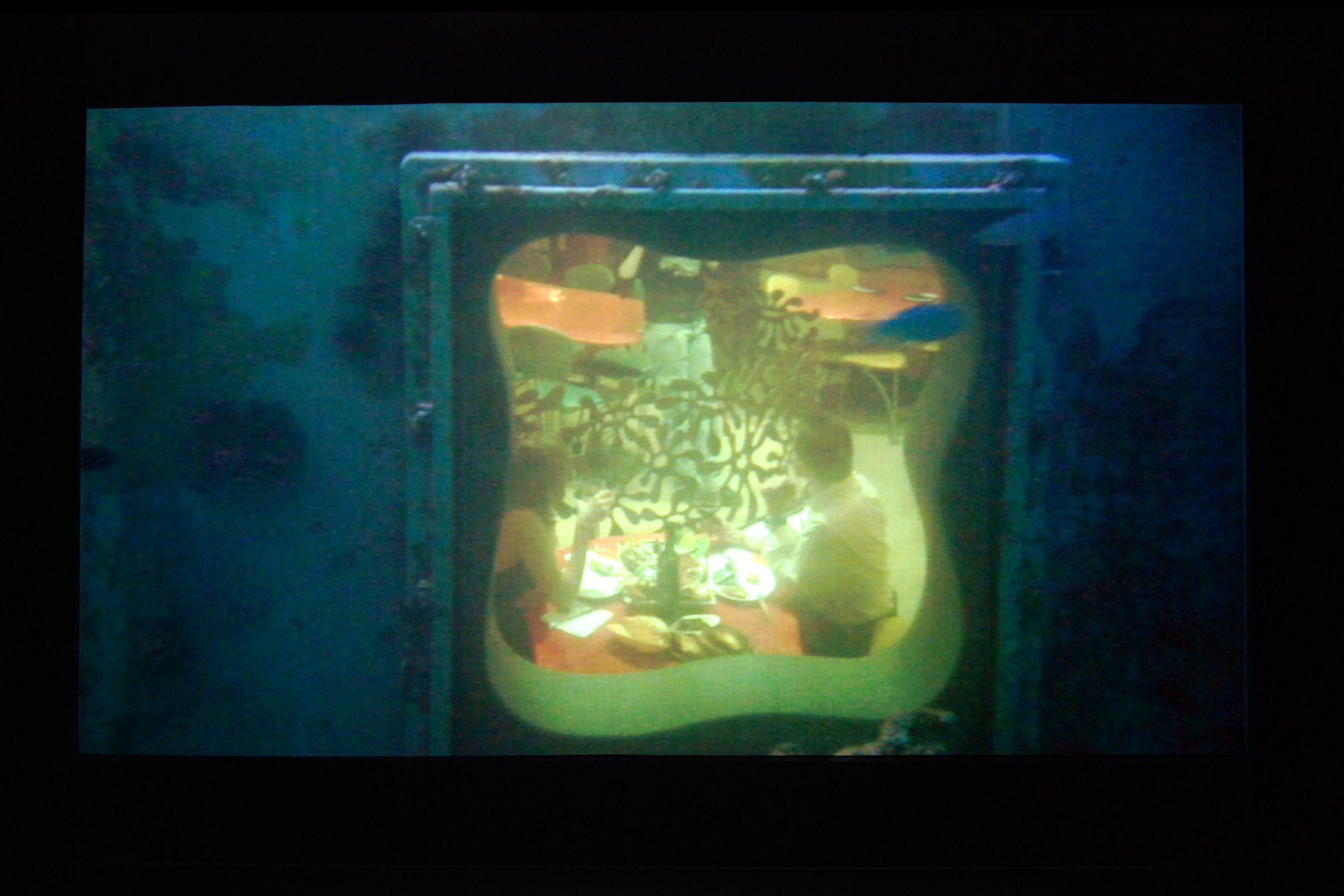
Red Sea Star, 2007
Leopold Kessler
Red Sea Star, 2007
high-definition video projection
search


Leopold Kessler
Red Sea Star, 2007
high-definition video projection
In 2004, while still a student at the Akademie der bildenden Künste in Vienna, Leopold Kessler installed a 1,200m long electric cable from his studio at the academy to his private apartment – for programmatic reasons and without seeking permission beforehand (Akademiekabel, 2004).For several weeks the artist obtained power parasitically from the institute’s supply, until the day of his graduation, when he literally cut the cord. The only visual outcome of the project is a video, showing him (with the help of several orange-jacketed friends) dismantling and rolling up the cable all the way back round a gigantic cable- drum (Diplom, 2004). In this early work, Kessler playfully posed questions about our daily need for energy – where it comes from and to whom it belongs – through a simple yet circuitous, humorous yet subversive act of annexation. This strategy of gentle anarchism is integral to his artistic practice. Kessler’s interventions in public space operate somewhere between service and sabotage, and explore the very relationship of the individual to his environment. Often disguised in blue workers’ overalls, Kessler makes unauthorised interventions against public facilities, repairing things or altering them according to his own personal needs – or just for the purpose of creating a moment of absurdity, surprise or irritation in our daily routine. He has equipped street lamps with a remote control, allowing him to switch the lights off and on, as necessary (Privatized, 2003), used the letter ‘O’ in a police station lightbox as portal to a secret depot for storing money (Depot, 2005), manipulated the water pressure of public fountains in the Austrian city of Graz, so that they spat their water jets beyond their basins, eventually flooding a busy square (Graz Hauptplatz, 2006), and linked two soda machines via gsm-technique, so that if a coin were inserted in one machine, the selected can dropped out of the other, and vice versa; the machines could connect places around the globe (Soda Machine a/b, 2006). With his secret operations, Kessler takes simple given functions that are in the public domain into his own hands, and by altering them or reversing them, questions the way in which we passively interact with a given surrounding.
This project was part of Sharjah Biennial 8.

This catalogue accompanied Sharjah Biennial 8, which attempted to renegotiate the relationship between art and ecology into a system of cohabitation.

The second book in the Still Life: Art, Ecology and the Politics of Change series, documents Sharjah Biennial 8 as it was on view.